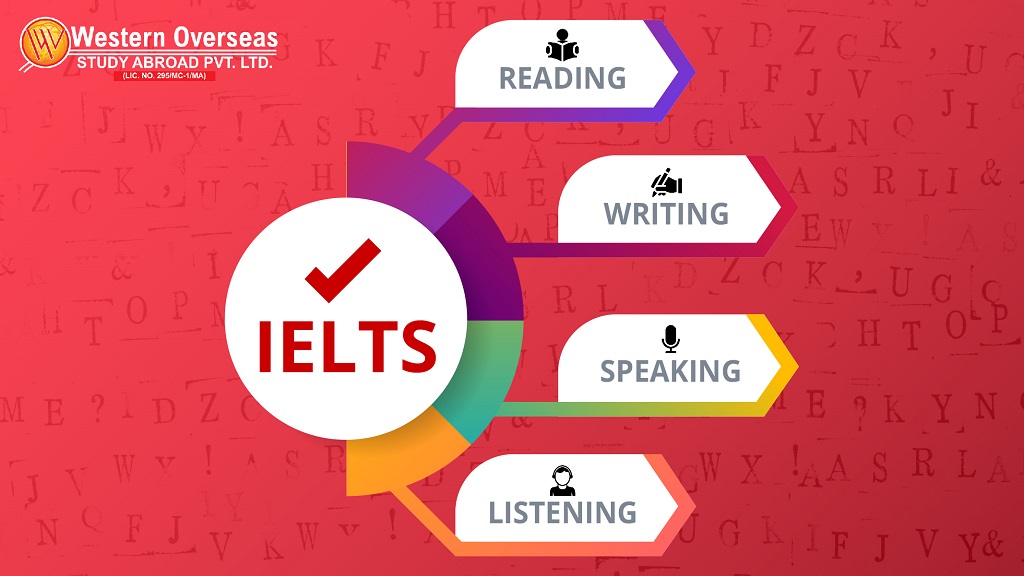Introduction to IELTS:
IELTS is an abbreviation for an International English Language Testing System, which is devised to help aspirants to move to abroad for further studies, work or settlement.
It is a test introduced long back in 1989 by Cambridge English language assessment and British Council. It is an English language standardized test to check the proficiency of non-native speakers. IDP, British Council and Cambridge Assessment English jointly managed this test.
As per the data given IELTS test was revised three times till now (1995, 2001 and 2005). It had been revised because of test taker increased every year.
After test, an IELTS test report is given to all test takers with a band score ranges from 0 to 9. Here, band 0 represents no test has attempted while band 1 is for non-user of language and band 9 is for an expert-user of this language. Institutes do not accept test reports older than 2 years. However, aspirants are highly recommended to apply within 2 years after the test.
Acceptance in countries:
IELTS is accepted in 140 countries as a proof of English language proficiency. There are other tests also like TOEFL, PTE, CELPIP etc. now the question is why IELTS only? The answer to this is “its acceptance” in almost all the countries.
Different countries have different band requirements for giving admissions in their institutions. Some of them are:
| Countries | Minimum band requirement |
| Canada | 6 |
| USA | 6.5 |
| Australia | 6.5 |
| UK | 4.0 |
| Germany | 6.5 |
| New-Zealand | 5.5 |
| Poland | 6.5 |
| Europe | 6 |
| Singapore | 6 |
| Denmark | 5.5 |
| Cyprus | 5.5 |
Features of IELTS Exam:
Following are some of the features of IELTS exam:
- IELTS exam is divided into two types: IELTS Academics and IELTS GT (General training). IELTS Academics is conducted four times in a month and IELTS GT is twice in a month.
- The IELTS test report is valid for 2 years from the date of result declaration.
- IELTS exam consist of four sections: Listening, reading, speaking and writing to check the ability of candidates in all four modules.
- Listening and Reading sections contain 40 questions and the candidate will get one mark for each correct answer. There will be no deduction for an incorrect answer.
- Writing exam is a descriptive paper comprises of two tasks depending upon the type of test i.e.IELTS Academics or IELTS GT.
- Speaking exam is conducted either one week early or in the next week of the written exam and the timing for this is 11-15 minutes.
- The scores are given in bands (0 to 9) and based on the candidate’s expertise, they get scores.
Types of IELTS exam:
IELTS exam is of two types: IELTS Academics and IELTS GT (General training). Both are different to each other and opted for a different purpose.
IELTS Academics
IELTS academics is basically conducted for the aspirants who want to opt for graduate, postgraduate or professional courses in English speaking environment. It is very important to understand the format of this test as both tests are similar in some way.
Here is the overview of IELTS Academics test format:
IELTS Academics test comprises of four sections:
Listening (30 minutes plus 10 minutes for writing answers on sheet)
Reading (60 minutes)
Writing (60 minutes)
Speaking (11-15 minutes)
Listening:
Listening test is further classified into four parts: Part 1 – there is a conversation between two people discussing travel plans.
Part 2– in this one person is addressing others, it’s a monologue
Part 3– there is a conversation between either two friends or students.
Part 4– There is also a monologue on any academic subject
Reading:
This test consists of 40 questions and these questions are fragmented into four sections which is designed to check the reading skills of aspirants. The text contained in these sections is taken from multiple sources like journals, magazines, newspapers etc.
Type of questions in this section is:
- Multiple choice questions
- Information identification
- Identify writer’s view or claims
- Matching
- Matching information
- Matching Headings
- Matching Features
- Sentence Completion
- Summary, flow chart completion
- Diagram labeling
- Short answer type questions
Writing:
This module consists of two tasks: diagram, graph, and table, etc. and Essay
Task 1: Task 1 comprises of diagrams, graphs, tables or charts. In this, aspirants need to write a summary of at least 150 words from the given visual information.
Task 2: Task 2 comprise of essay in which student has to write in at least 250 words.
In both tasks, word limit can be exceeded up to 180 words and 280 words for task 1 and task 2 respectively.
Speaking:
Speaking test is conducted one week prior or later in week of the written exam. The timing of this test is 11-15 minutes. Different types of questions are asked in this module:
Part 1: Examiner asks general questions related to candidate’s personal life such as home, family, work or hometown etc.
Part 2:In this, examiner asks cue card question, candidate has given time to think for one minutes after that he has to speak for two minutes.
Part 3: In this, examiner will ask follow-up questions related to cue-card.
Here in this article, all doubts related to IELTS have been cleared.This has covered basic questions, still you have any query you can visit western overseas and get answers all your questions.




